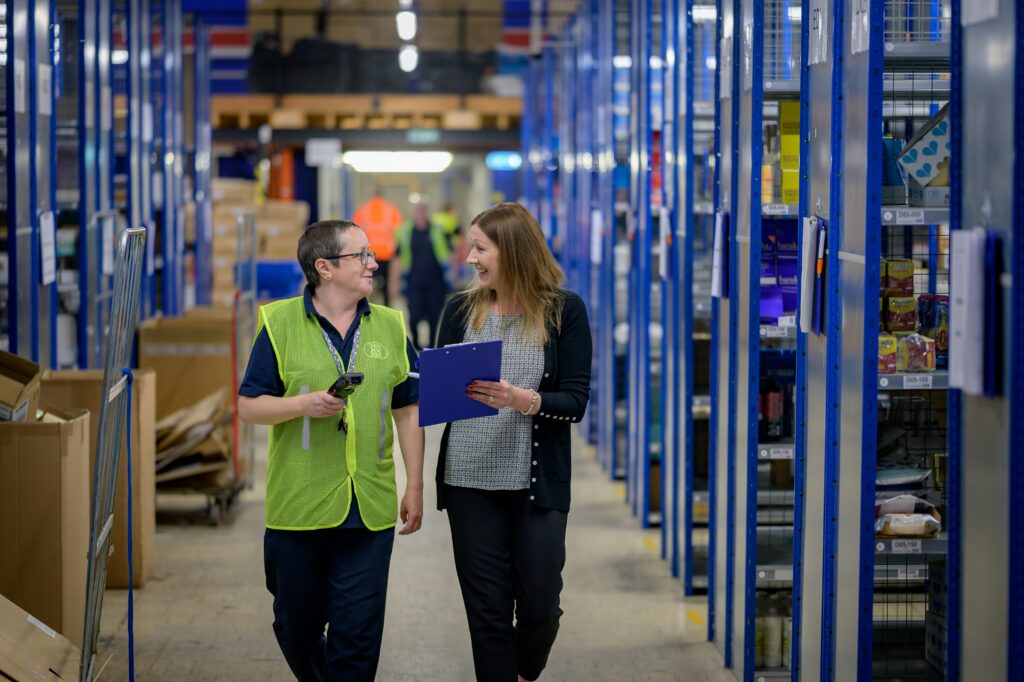
From fruits and veggies to frozen foods, properly managing the cold chain is vital to the transportation and storage of many types of food products and food ingredients. Shippers and their logistics providers must maintain these products within the right temperature ranges along multiple points in the supply chain.
Temperature control and humidity management is paramount to food safety given that even slight deviations from temperature ranges can lead to spoilage or contamination, risking consumer safety from food-borne illness. This requires precise temperature monitoring and control systems. Failure to maintain the right temperature and handling of products has other risks such as economic losses for manufacturers, distributors, and retailers; product recalls; and damage to brand reputation.
By selecting a transportation and warehousing provider with efficient, compliant food logistics services, participants in the cold chain can not only reduce food waste and spoilage but ensure food safety.
Food Safety Modernization Act focuses on prevention
It’s also critical for cold chain logistics providers to stay compliant under the FDA Food Safety Modernization Act (FSMA) which began implementation in 2015 following its 2011 signage into law. With a focus on preventing food safety issues through systematic monitoring, the FSMA signaled a new era of food safety and traceability through mandates that establish preventive controls for food facilities, including temperature control.
Food facilities are now required to implement and maintain a number of preventive controls. Required monitoring points in the cold chain under the FDA FMSA guidelines include receiving and storage areas, processing zones, holding equipment and transportation systems. Parties in the cold chain must follow FDA-mandated temperature requirements for cold holding, cooling, and hot holding (following specific temperature parameters), while regularly monitoring and documenting the temperatures of product.
Where technology meets the cold chain
To address today’s cold-chain requirements, transportation and warehouse providers require advanced monitoring systems to track temperature, humidity and other environmental factors in real time. This enables prompt issue detection and corrective measures to ensure the integrity and safety of stored products.
Fortunately, advances in technology — including AI-powered solutions like transportation management systems with load planning and route optimization, warehouse management systems, predictive analytics, and demand forecasting tools — are significantly enhancing the efficiency of cold chain management.
Common tracking tools like barcode scanners and RFID tags help to better manage the cold chain. Among other solutions that track product as it moves through the supply chain, temperature-monitoring IoT sensors can monitor conditions in real time with functions like alerting to inform managers when products go out of specified temperature tolerances.
Transportation providers are also using advanced telematics to enable real-time tracking of temperature, door activity and location of product, ensuring compliance and reducing losses. Think “connected trucks,” equipped with sensors, GPS and other capabilities that collect and transmit data to the cloud or fleet management systems.
These technologies all contribute to make cold-chain logistics more efficient, helping logistics providers cut labor and operational costs while staying compliant and keeping the food supply safer.
Warehousing trends in the cold chain
In the warehouse and distribution center, automated storage and retrieval systems (ASRS) ensure efficiency in managing cold-chain foods and food ingredients in both refrigerated and frozen environments. Ideal for high-density storage, these systems can be divided into separate climate-controlled zones, each with its own temperature and humidity settings to accommodate different types of food products. Many modern ASRS implementations also use sensors to enhance their functionality and ensure optimal storage conditions.
Accessibility and storage capacity are key considerations when selecting a cold-chain warehouse provider. Cold storage warehouses must be strategically located near transportation hubs and have sufficient capacity and capabilities to accommodate varying product volumes.
Growing consumer demand for fresh and frozen products as well as the need for more efficient and reliable cold chain logistics are driving increases in cold storage and temperature-controlled warehousing facilities, particularly for those placed near major transportation hubs and ports. In addition, many food supply chains are becoming more localized and manufacturers are moving production closer to their main markets to reduce risk from climate disruptions and geopolitical uncertainty. Continued growth in e-commerce in the grocery sector, including last-mile delivery services, are also driving increases in demand for cold chain logistics.
All of these cold chain considerations are why producers, manufacturers, distributors, retailers and others in the supply chain need a food-grade warehouse provider that adheres to proper handling and storage of food products and ingredients.
At Worley Warehousing, we only operate to the most stringent quality control practices with 24/7 temperature-controlled monitoring for food and food ingredients to ensure product safety. Our cold chain storage capacity, located in the heart of the Midwest with close proximity to transportation infrastructure, includes temperature-controlled rack and bulk storage space, featuring refrigerated cooler compartments (with or without humidity control) and air-conditioned storage. All of our food-grade warehouses are USDA Organic Certified.